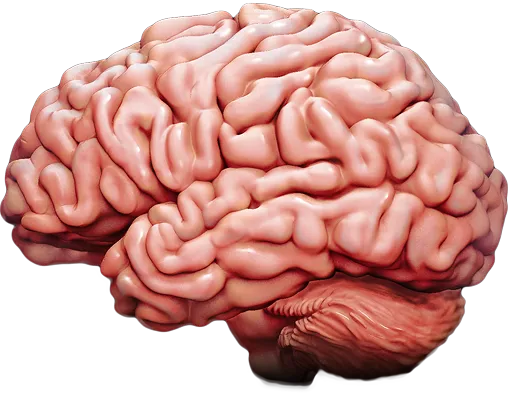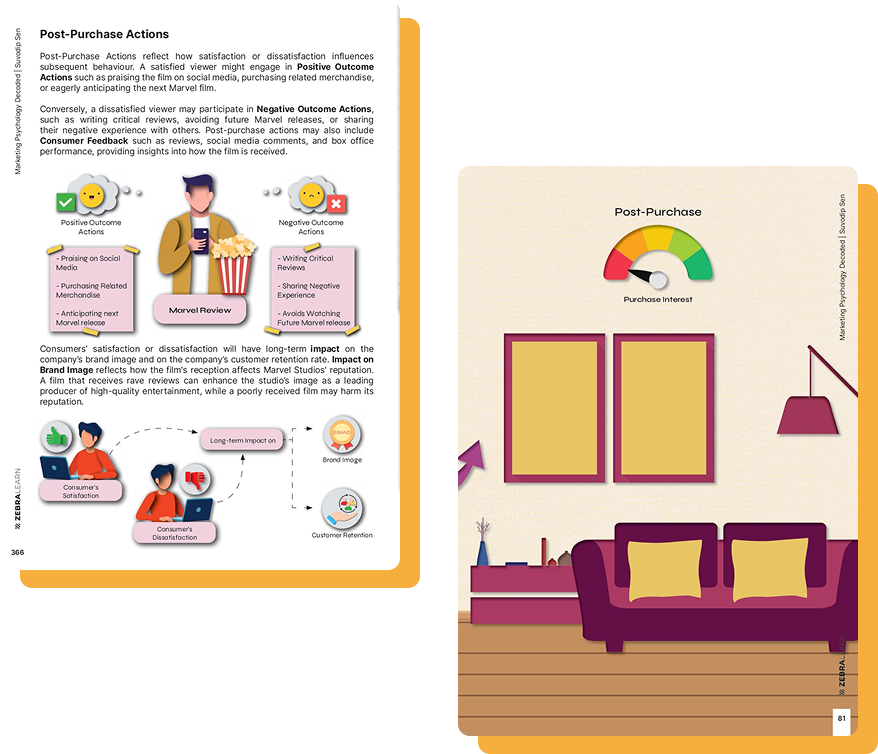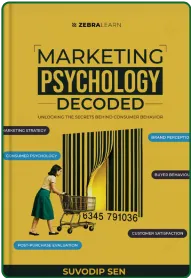%201%20(4).svg)
Understand The "Why" Behind Every Consumer Decision

How Brands Influence You (Without Saying a Word)

It’s not luck. It’s psychology in action.
- The hidden forces behind everyday buying decisions
- How to apply those insights in campaigns, product design, and CX
- Real-life examples decoded into practical strategies
Learn the Psychology Behind Every Purchase
and perception shape brand recall

How Brands Influence You (Without Saying a Word)



Who Should Read This Book?





"Most marketing campaigns fail by focusing solely on motivation while neglecting ability and opportunity—the three critical components that determine consumer action.

Journey Through Consumer Psychology
1.1 Understanding customers’ thought processes
1.2 Consumer psychology: What is it?
1.3 Consumer behaviour: What is it?
1.4 Consumer psychology: How does it function?
1.5 Is the point of researching consumer psychology moot?
1.6 What role might consumer psychology play in creating a marketing strategy?
1.7 Summary & did you know
1.8 Action: Task from day-to-day life
2.1 What drives consumers and how it influences their choices
2.2 Impact of motivation on consumers
2.3 Ability and resources of the consumer: Ability
2.4 Chance of consumption: Opportunity
2.5 Outcome of motivation, ability and opportunity
2.6 Summary & did you know
2.7 Action: Task from day-to-day life
3.1 Whispering vines: Nurturing perception and connection
3.2 How do consumers form a connection with a brand or with an offering?
3.3 Stimulus & exposure
3.4 Exposure can be selective
3.5 What options do consumers have to avoid any marketing stimulus in the form of advertisement?
3.6 Attention and its characteristics
3.7 How do you capture the attention of the consumers?
3.8 What is perception?
3.9 Why does perception differ from person to person?
3.10 Building perception through senses
3.11 Influence of stimuli on the development of perception
3.12 Summary & did you know
3.13 Action: Task from day-to-day life
4.1 The concept of attitude
4.2 Various approaches to attitude formation and transformation
4.3 Different aspects of attitude development
4.4 High effort – cognitive foundation model for purchase behaviour
4.5 Cognitive response to advertising messages
4.6 Expectancy-value model
4.7 Theory of reasoned action (TRA)
4.8 The marketing ramifications of how customers form their attitudes
4.9 Summary & did you know
4.10 Action: Task from day-to-day life
5.1 Concept of “low-effort” purchases
5.2 Influencers with low-effort attitude
5.3 Advertising strategy for affective-based attitude
5.4 Advertising strategy for cognitive-based attitude
5.5 Summary & did you know
5.6 Action: Task from day-to-day life
6.1 How does one define consumer memory?
6.2 Various types of memories
6.3 How can a customer access their memory?
6.4 Improving customers’ retrieval
6.5 Leveraging consumer memory
6.6 Summary & did you know
6.7 Action: Task from day-to-day life
7.1 Perfection vs. contentment
7.2 Optimising vs. satisficing
7.3 Factors affecting “optimising” vs “satisficing”
7.4 Consumers’ decision and marketers’ strategy
7.5 Marketing strategy for “satisficers”
7.6 Compensatory and non-compensatory buying
7.7 Factors affecting compensatory and non-compensatory purchase
7.8 Exploring purchase process
7.9 Summary & did you know
7.10 Action: Task from day-to-day life
8.1 Discord after buying
8.2 Consumer’s approach to learning
8.3 How does a buyer determine whether they are satisfied or not?
8.4 Theory explaining consumers’ satisfaction and dissatisfaction
8.5 Method of disposal
8.6 Considerations for marketing
8.7 Summary & did you know
8.8 Action: Task from day-to-day life
9.1 Strategy Checklists
Optimizing Vs. Satisficing: The Decision Type That Changes Everything
"Does your customer exhaustively research every option (optimizing) or choose the first acceptable option (satisficing)? The answer transforms your entire marketing approach.

.svg)
.svg)
.svg)
.svg)

Most marketers stop at the transaction.





If You Don’t Understand the ‘Why’ Behind Consumer Decisions—You’re Already Behind.
This book shows you how to decode real behavior—and build strategies that actually work.
.svg)
.svg)
.svg)

Frequently Asked Questions
Not at all. While the book is grounded in solid psychological research, every concept is paired with real-world examples and end-of-chapter exercises designed specifically for marketing professionals to apply immediately. As one reader noted, "I was able to implement the MAO framework from Chapter 2 in our campaign planning the very next day after reading it.
Most books focus either on tactical marketing tips OR abstract psychological theories. "Marketing Psychology Decoded" bridges that gap with a comprehensive framework that follows the entire consumer journey. It uniquely balances cognitive and emotional aspects of decision-making while providing practical application tools for each concept.
Absolutely. While examples include both B2C and B2B scenarios, the psychological principles apply universally to all human decision-making. The book specifically addresses organizational buying psychology in Chapter 1, examining how Decision-Making Units (DMUs) operate in business purchasing contexts.
Yes. The book is structured to benefit both experienced marketers and those new to the field. Concepts build progressively, with clear explanations of fundamentals before advancing to more complex applications. New marketers will gain a solid psychological foundation, while experienced professionals will discover new frameworks to enhance their existing knowledge.
Many readers report implementing specific frameworks the same day they read about them. Each chapter includes "Quick Implementation" sections designed for immediate application, along with more comprehensive strategies that may take longer to fully integrate into your marketing approach.
While not exclusively focused on digital marketing, the psychological principles apply directly to digital contexts. The book includes specific examples of applying consumer psychology to website design, social media content, email marketing, and digital advertising throughout relevant chapters.
Yes, you can download the first chapter for free to experience the practical approach and writing style. This sample includes the introduction to consumer psychology fundamentals and one complete framework with implementation examples.
_page-0288.jpg)
_page-0289.webp)
_page-0290.jpg)
_page-0291.jpg)
_page-0292.webp)
_page-0293.webp)
_page-0294.webp)
_page-0295.jpg)
.svg)



.svg)
.svg)